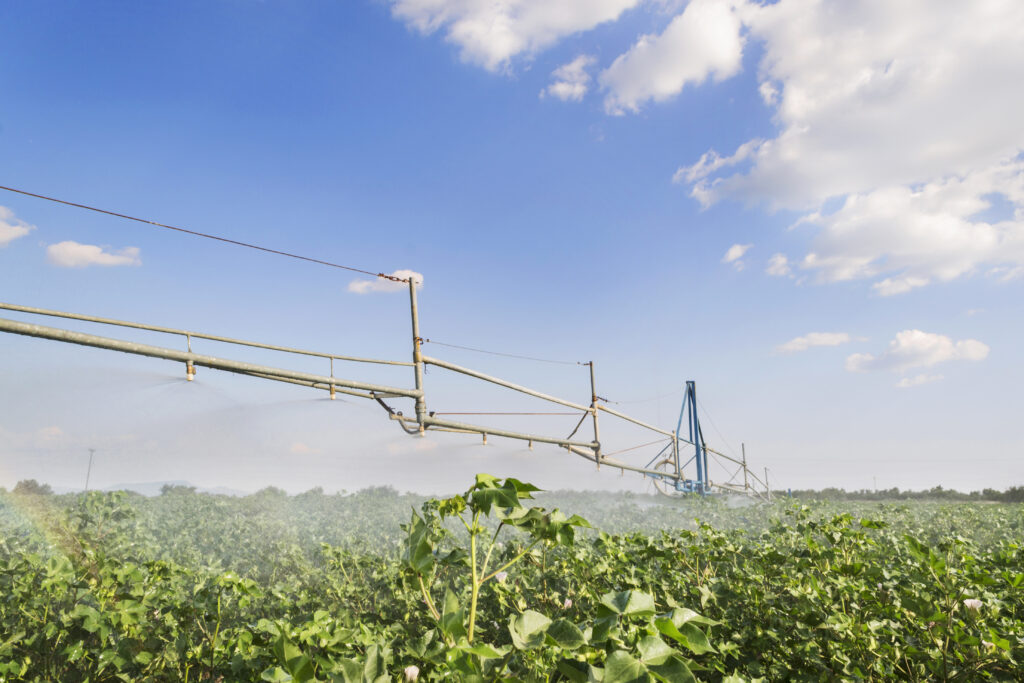Barnhardt Natural Fibers Group is an active partner of the Cotton LEADS™ program, which only reinforces our commitment to responsibly produced cotton throughout the cotton life cycle. We are joined by over 460 other global leaders throughout the cotton supply chain, including companies like Target, Kohl’s, Brooks Brothers, and, the latest member, Hugo Boss.
The Cotton LEADS™ program is built on core principles that are consistent with sustainability, the use of best practices, and traceability within the supply chain, all of which provide cotton users with the confidence and knowledge that their raw material is responsibly produced and identified.
Today, we will explore five key sustainability initiatives on which Cotton LEADS™ is focused (relative to U.S. grown cotton).
Cotton Carbon Footprint:
Cotton has a small greenhouse gas footprint, and when the carbon stored in the fiber is taken into consideration, the carbon emitted in cotton’s production is almost equal to the carbon captured in the fiber.
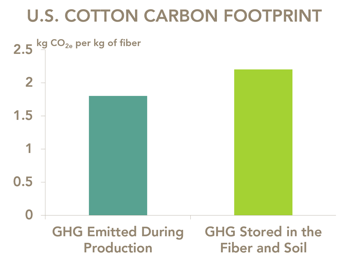
Cotton Energy Reduction & Balance:
The energy required to produce cotton is actually less than the energy stored in the cottonseed. Stored energy can be captured directly, such as biodiesel or other biofuels, or indirectly, as feed for dairy cows and aquaculture.
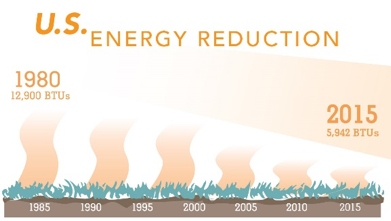
Irrigation & Water Usage:
Since 1980, irrigation water applied per pound of cotton has declined 75%.
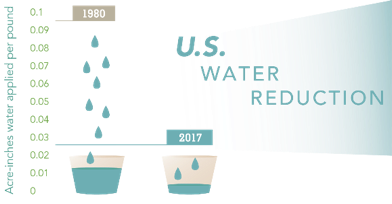
Insecticide Usage:
There has been a 50% reduction in the number of insecticide applications over the last 25 years.
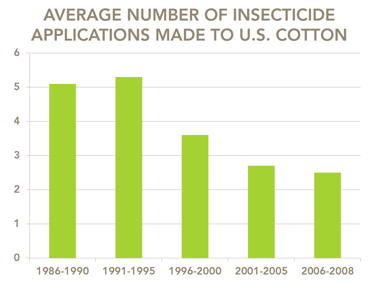
Land & Soil Conservation:
Two-thirds of U.S. growers use some form of conservation tillage and soil loss has been reduced by 68% in the last 30 years.
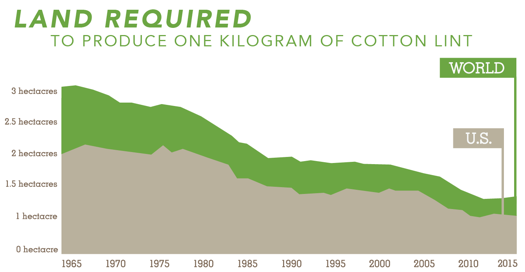
To learn more about these sustainability initiatives and continuous improvement efforts—such as modern technology and new farming techniques—please visit the Cotton LEADS™ website. We’d also like to offer special thanks to Cotton Leads™ for providing most of the statistics and graphs used in this post.
